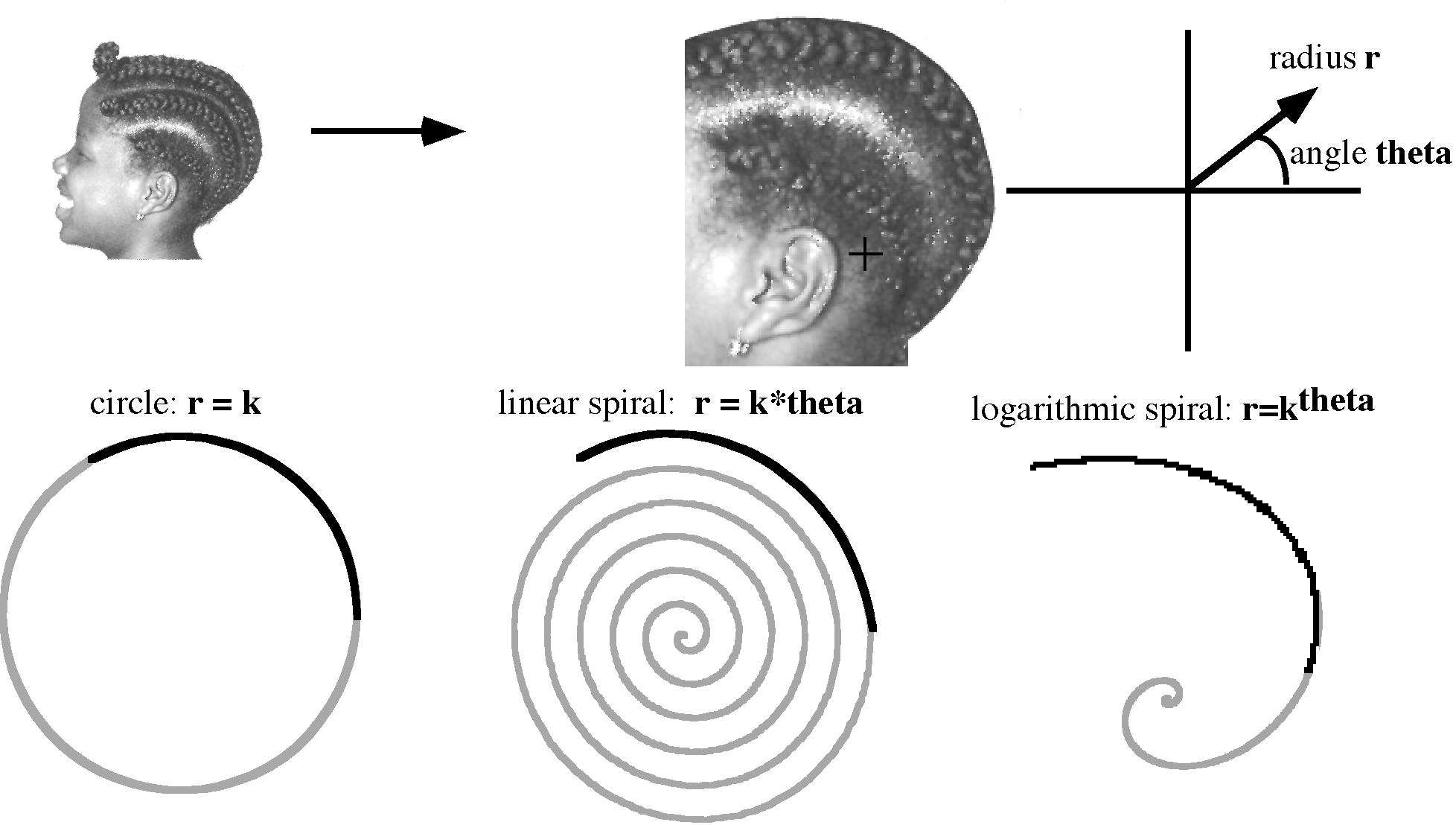Back to Notes On Math Connections
Analysis of Cornrow Curves
First, let's make sure we have the right kind of curve. Note that of the three, the logarithmic curve is the best fit. It is easy to write the equation if we use polar coordinates.

The next step is to actually measure the radius at selected angles of theta. In this example we have provided the protractor, so you only need a ruler.
Plotting the increase of radius with increasing theta will produce a curved graph. To change this into a linear graph we need to use the logarithmic function:
y = ax expressed as
log y = x*log a. The logarithmic spiral,
r =ktheta becomes
log r = theta*log k.
Putting this into the form for a linear graph,
y = m*x + b,
we have y = log r, x = theta, m = log k, and b = 0.
So all we have to do is measure the slope m of a plot of theta versus log
r.
Since m = log k, then k = 10m.
If you plot a logarithmic spiral using this value for k, it should closely match the curvature of the cornrow braid.
